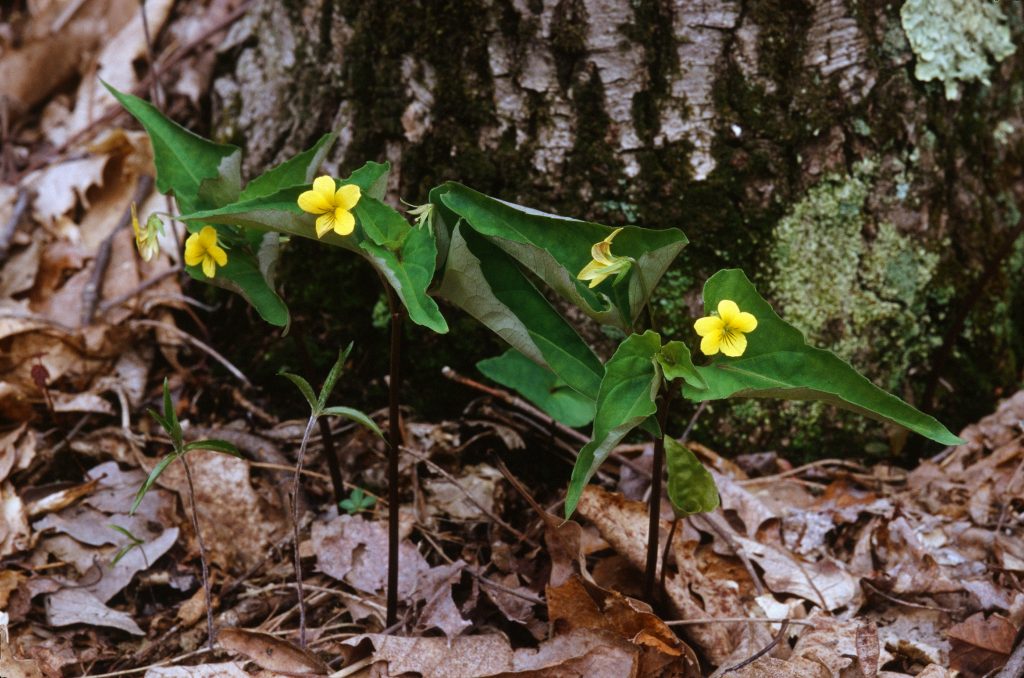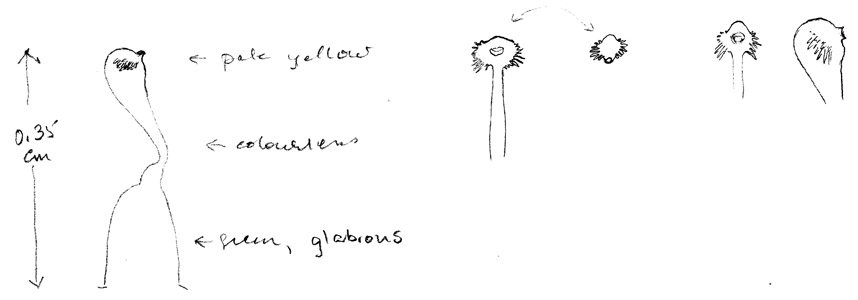Viola hastata
Extracts from Kim’s working notes. Illustrations: 5 photographs of Viola hastata and 2 drawings.
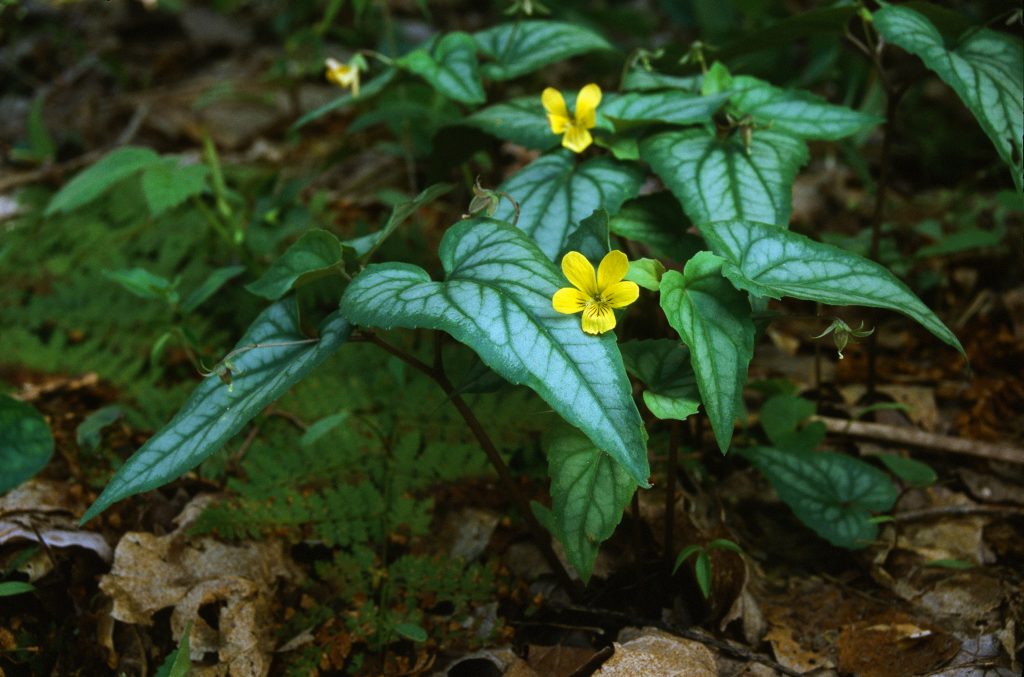
Viola hastata, has large arrow-shaped leaves crowded at the top of straight stems. Where it grows in very shaded areas of moist woodlands, the leaves are variegated with very striking silver markings but in drier, sunnier situations they are usually less marked or plain green.
In Dunbar valley, SW PA, also at Somerset, PA where V. hastata is growing in dryer, colder, more exposed sites it is without variegations. Best variegations are seen on leaves growing in soil rich with duff, in cool valleys, probably more acid conditions, as at lower elevations in Dunbar valley and site in Tennessee west of Elizabethtown.
From: A Guide to The Wildflowers and Ferns of Kentucky by Mary E. Wharton & Roger W. Barbour, the University Press of Kentucky, p. 218:
Erect stem 4-10 inches high, long-triangular leaves. The yellow petals often slightly purplish on the back. Moist wooded slopes, often under hemlocks, not frequent. Flowers early April.
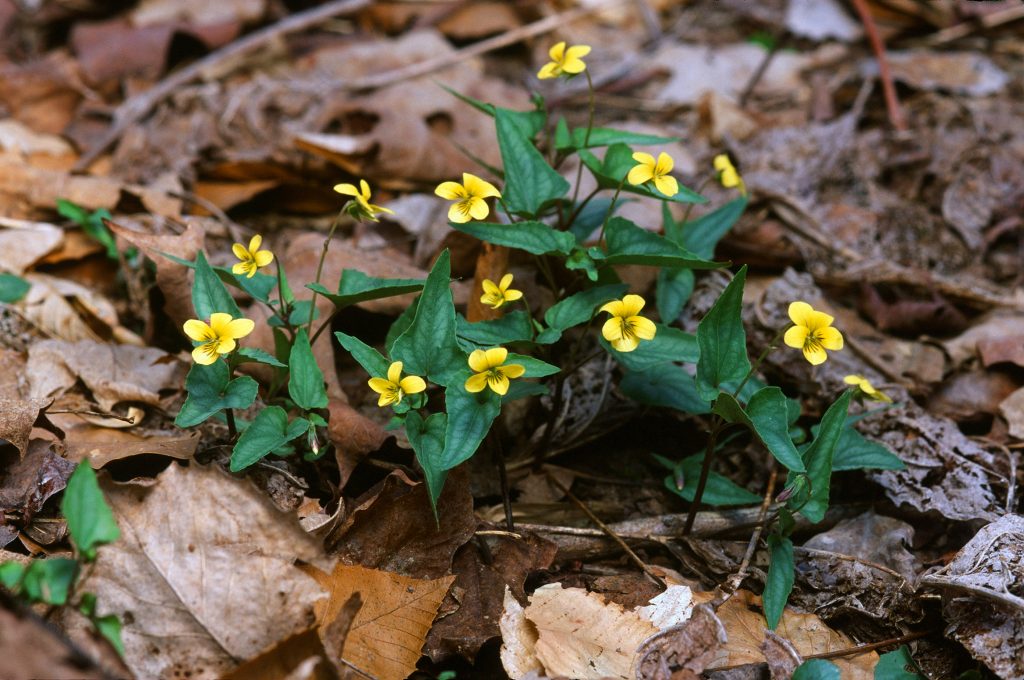
Viola hastata and Viola pubescens are the two species with yellow flowers produced on stems.
In Ohiopyle S.P., and Canaan Valley, WV, Viola hastata was always growing with Viola rotundifolia. V. hastata flowers about a week earlier than V. rotundifolia. In Tennessee, it was in spongy deep duff of needles from hemlocks, on a creek bank.
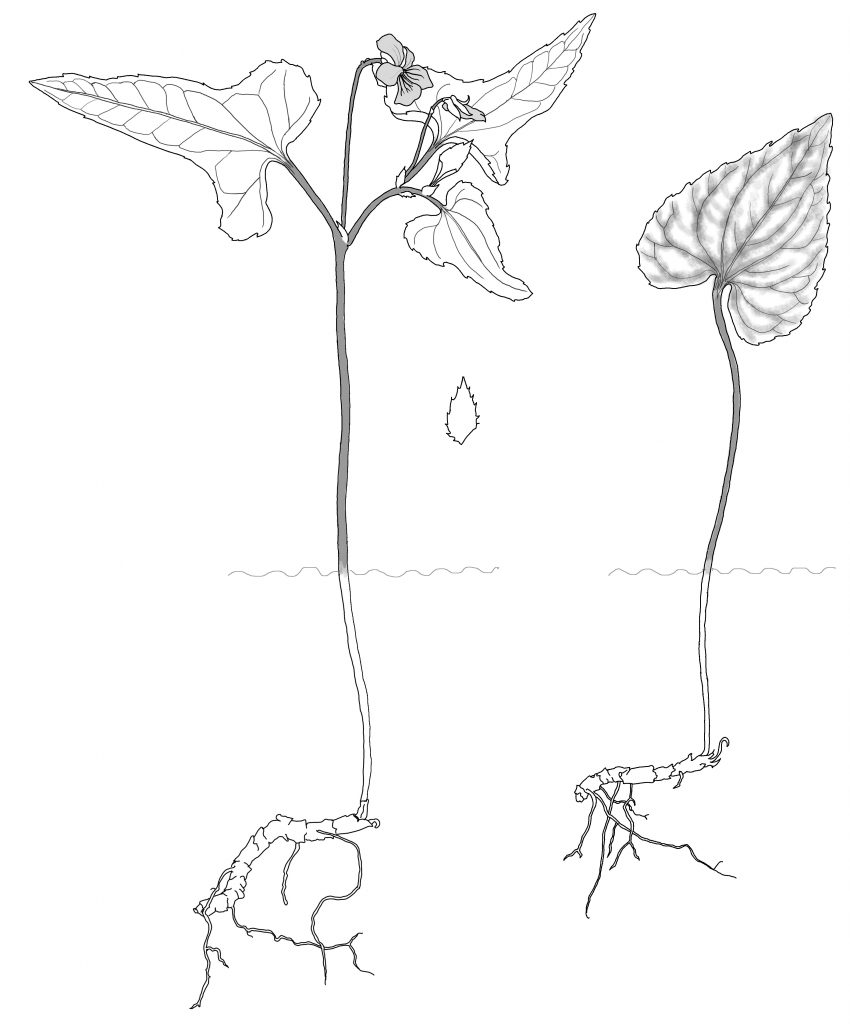
Native range – see – http://plants.usda.gov/cgi_bin/plant_profile.cgi?symbol=VIHA2
USDA Hardiness Zone – zone 5, most likely 4, maybe 3
Light preference – Full shade to dappled sunlight
Soil fertility preference – Average
Soil moisture preference – Average to well drained
Bloom time – Mid to late spring
Bloom color – Bright Yellow
Foliage – Medium green, silvery mottling patterns
Spread – 4″-8″ clump
Height – 4″ – 8″
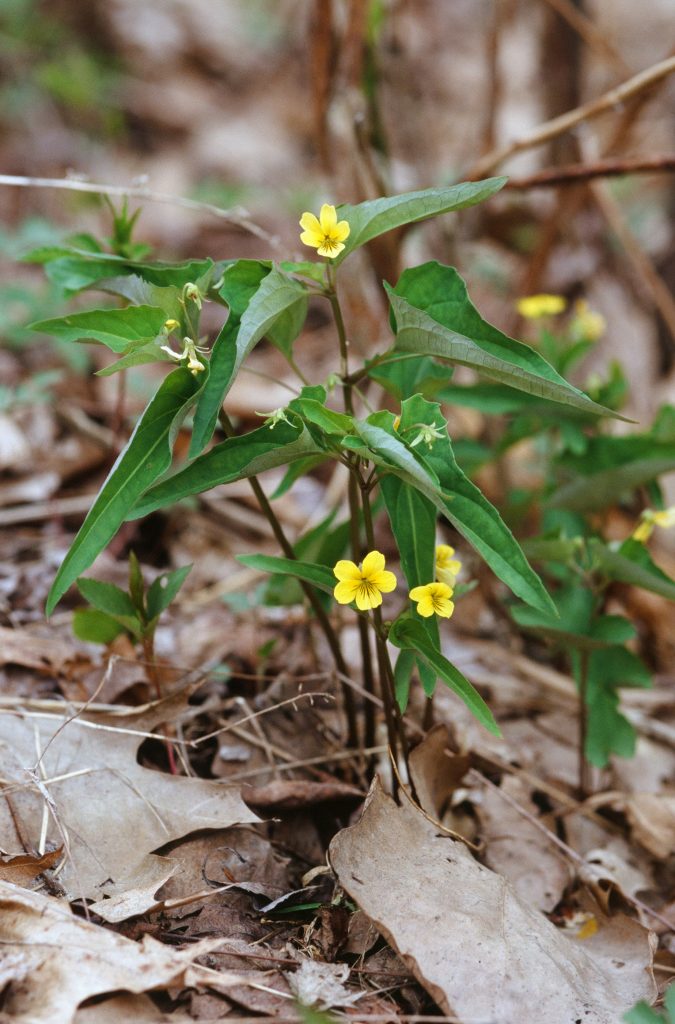
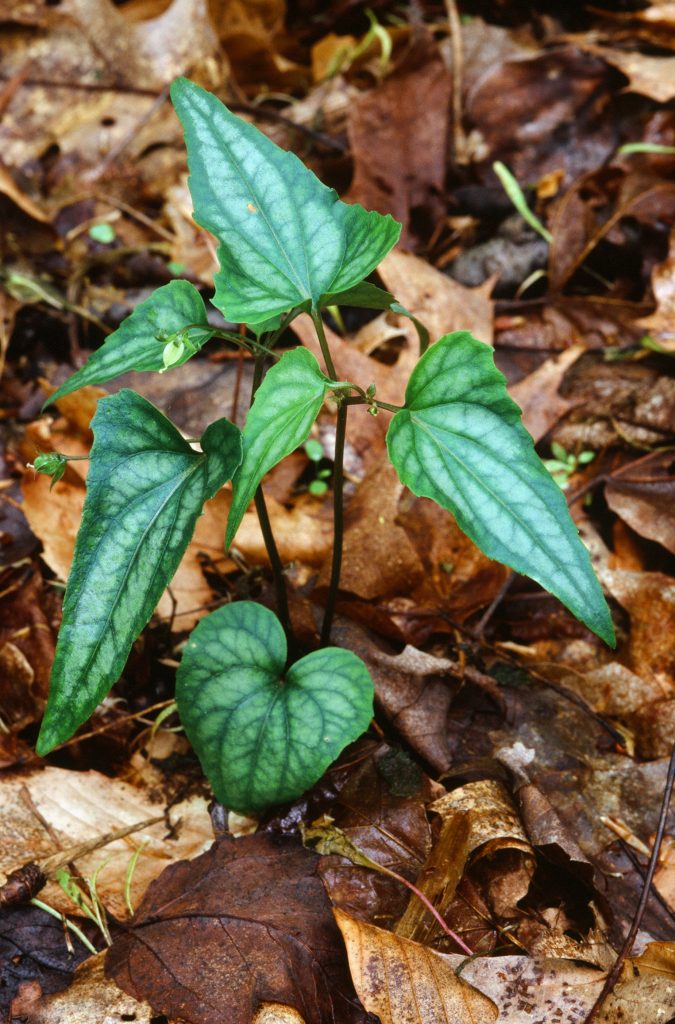
The specific epithet hastata refers to the sword like shape of the leaves.
The common name, “Halberd Leaved Violet”, comes from the resemblance to a “halberd”, which was a spear-like weapon used ceremonially in ancient times.
2n=2x=12 (diploid).
Sect. Chamaemelanium subsect. Nudicaules [Marcussen, 2011].
André Michaux, 1746-1802.
‘hastate’ means ‘spear-shaped’
http://plants.usda.gov Plant Images:
Distribution by State: AL, FL, GA, KY, MS, NC, OH, PA, SC, TN, VA, WV.
Eastern states except the north eastern states of ME, VT, NH, MA, CN, RI, NJ, DE.
